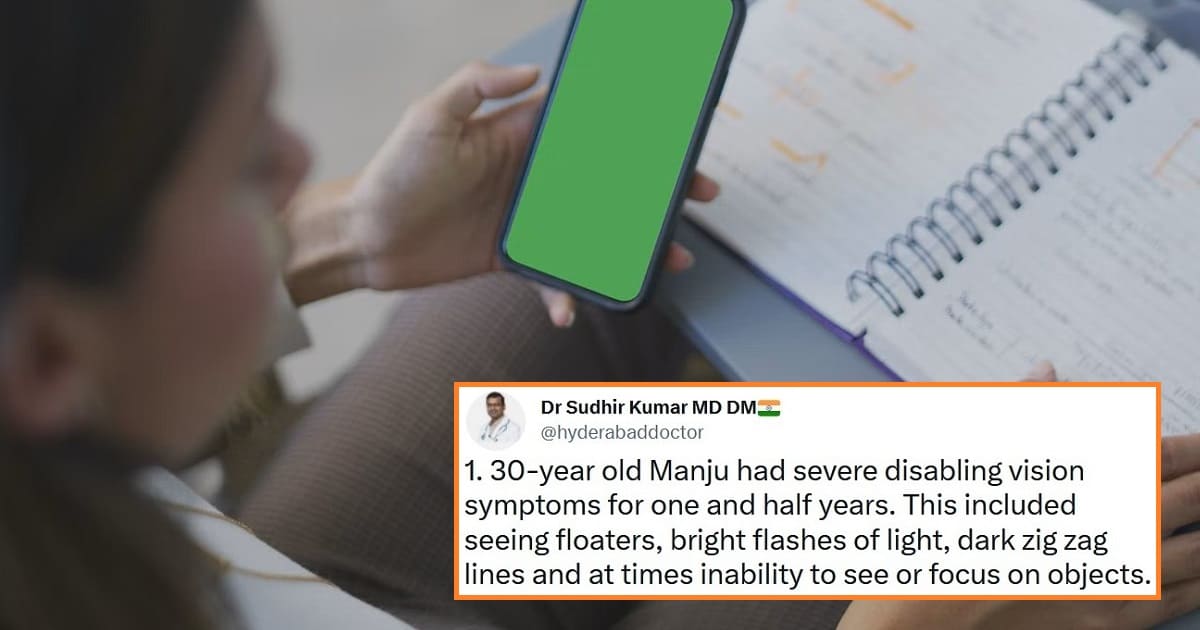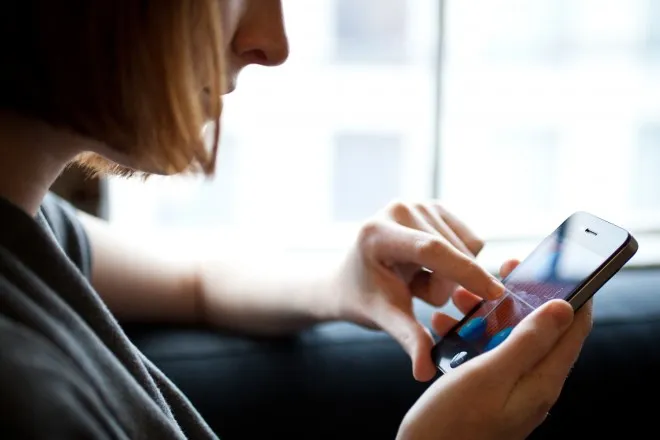
The use of smartphones has permeated every aspect of contemporary life. Smartphones are now a common sight in our everyday lives as a result of the development of technology and its growing accessibility.
However, with our increasing dependence on these devices, there has been growing concern about the impact of smartphone use on our health. Eye strain is one of the most well-known health issues linked to smartphone use. These gadgets’ screens generate blue light, which can irritate the eyes and disrupt sleep.
ADVERTISEMENT
This is because blue light has a high-energy visible (HEV) wavelength and can penetrate deep into the eye and disrupt the natural sleep-wake cycle. In addition, staring at a small screen for long periods can lead to dry eyes, blurred vision, and neck and back pain.

However, if you are thinking that these are the most aggressive symptoms, then you are wrong because they are not. Smartphones may cause something worse than that. And something similar happened with one woman.
Due to frequent usage of smartphones, a 30-year-old lady from Hyderabad suffers from eyesight impairment. Her doctor posted this information on social media.
According to the story, the woman lost her vision as a result of using her smartphone excessively late at night. After the Hyderabadi woman quit her job and began spending hours on her smartphone, symptoms including seeing floaters, bright flashes, black zigzag lines, and an inability to focus on objects began to manifest.
The doctor said that she had smartphone vision syndrome. In a series of tweets, a physician from Hyderabad published a case study on her and described how “smartphone vision syndrome” (SVS) is brought on as well as how she was able to rectify her eyesight. He added that initially, doctors were unable to find her problem and referred to it as having neurological causes.
ADVERTISEMENT
Have a look at his Twitter thread:
2. There were moments when she could not see anything for several seconds. This occurred mostly at nights when she got up to use washroom. She was evaluated by an #eye specialist and detailed evaluation was found to be normal.
She was referred to rule out neurological causes.— Dr Sudhir Kumar MD DM🇮🇳 (@hyderabaddoctor) February 6, 2023
4. The diagnosis was obvious now. She was suffering from smartphone vision syndrome (SVS). Long-term use of devices such as computer, smartphones or tablets can cause various eye-related disabling symptoms, referred to as computer vision syndrome (CVS) or digital vision syndrome.
— Dr Sudhir Kumar MD DM (@hyderabaddoctor) February 6, 2023
6. Manju was anxious as she feared something sinister with her brain nerves but was finally determined to take corrective action.
She said- “instead of minimizing, I will stop looking at smartphone screen, unless absolutely necessary. In any case, my phone use is recreational.”— Dr Sudhir Kumar MD DM (@hyderabaddoctor) February 6, 2023
8. Take home message:
*Avoid looking at screens of digital devices for long, as it can cause severe and disabling vision-related problems.
*Take 20-second break, every 20 min, to look at something 20 feet away, while using a digital screen (20-20-20 rule).— Dr Sudhir Kumar MD DM (@hyderabaddoctor) February 6, 2023
9b. Referencehttps://t.co/UiiSFyGH2v
— Dr Sudhir Kumar MD DM (@hyderabaddoctor) February 6, 2023
ADVERTISEMENT
11a. Spectral peaks for smartphones are very similar to short-wavelength blue visible light. Damage to retina caused by light, especially blue light is well-established.
A case of retina damage causing blurring of vision in both eyes due to smartphone use at nights was reported.— Dr Sudhir Kumar MD DM (@hyderabaddoctor) February 6, 2023
Finally, I just wanted to underscore that although using smartphones has become a significant part of our everyday lives, it is crucial to be aware of the different health issues this technology might cause.
To lessen the influence on our eyes and mental health, smartphone usage must be done in moderation and with regular breaks. We can maintain a healthy, balanced lifestyle in the digital era by being aware of how we use our smartphones and taking action to lessen their negative effects.
ADVERTISEMENT











